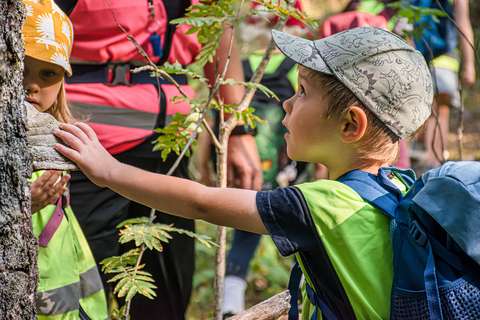Sustainable development goals as integral parts of the learning path of children and young people

For the City of Espoo, sustainable development is, first and foremost, a principle that guides all operations. It signifies change aimed at maintaining and improving living conditions of current and future generations. The Growth and Learning Sector provides sustainable education through the entire learning path from early childhood to adulthood.
Success requires taking the environment and nature into account in all choices from the education and care of children and young people to the daily lives of individual Espoo residents and city-level decisions. This also means socially, culturally and economically sustainable development.
The end result is a comfortable city close to nature and a safe place to live
But how will the sustainable development be achieved in practice?
In the Growth and Learning Sector, we strive to integrate sustainable development into our daily activities with children and young people by teaching them about aspects such as conscious consumption and ecology, and working with them to think up new ways of making their activities more environmentally friendly. This series of articles covers sustainable development education in the Growth and Learning Sector through reduced food wastage, environmental education, sustainable development clubs for pupils and recycling, for example.
Espoo as a pioneer in climate work
Espoo wants to be a pioneer in climate work and, through joint efforts, ensure that the ecological footprint of Espoo residents is reduced.
In the Growth and Learning Sector, considering the environment is part of the learning path of Espoo-based children and young people from the start. The sector offers age-appropriate education that provides all learners with the knowledge and skills to promote sustainable development.
There is also collaboration with the children and young people to think up new ways of carrying out sustainable measures. This teaches the children to have a good relationship with nature, make sustainable choices and develop their environmental skills. Local nature plays a particularly important role as a source of well-being for children and young people.
At the city-level, Espoo is working to improve its expertise related to the UN’s Sustainable Development Goals (SDG). It is Espoo’s objective to reduce carbon dioxide emissions and reach carbon neutrality by 2030.
Espoo’s motto is “creating a sustainable future together.” Participation and considering all residents of the city are key elements of socially sustainable development.
“The ability to participate in the creation of well-being is part of socially sustainable development. We create a sustainable future together,” says Director of Growth and Learning Harri Rinta-aho.
Recycling as part of education
In Espoo, participation also means equality between the various areas.
One example of the measures was expanding the sorting arrangements in the spring of 2022. The project supports the objectives of the curriculum as well as Espoo’s goals of promoting sustainable development.
In Espoo, almost all schools have an efficient recycling point that children and young people can use to practice sorting, new recycling methods, the circular economy and sustainable consumption.
The aim is to reduce the amount of waste and promote recycling in educational institutions. Close collaborators in the project are HSY and Kierrätyskeskus, which train children and young people on sorting. Primary schools are provided with education on the creative reuse of materials and a sustainable lifestyle.
“Children and young people have an amazing ability to come up with ideas and see things in a new light. When young people let their ideas flow freely, used items turn into art and new utility articles,” says Education Development Manager Riina Plosila.
International cooperation sustainably
Travel was not recommended during the pandemic, but international cooperation was conducted virtually.
Even though remote connections cannot fully replace face-to-face meetings, they still provide the opportunity for international cooperation. Remote connections across the world also enable an increasing number of children and young people to get involved, because remote travel is not only environmentally friendly but also cost efficient. As regards international visits, special attention is paid to sustainable ways of travel. The Erasmus programme of the Finnish National Agency for Education also encourages international mobility.